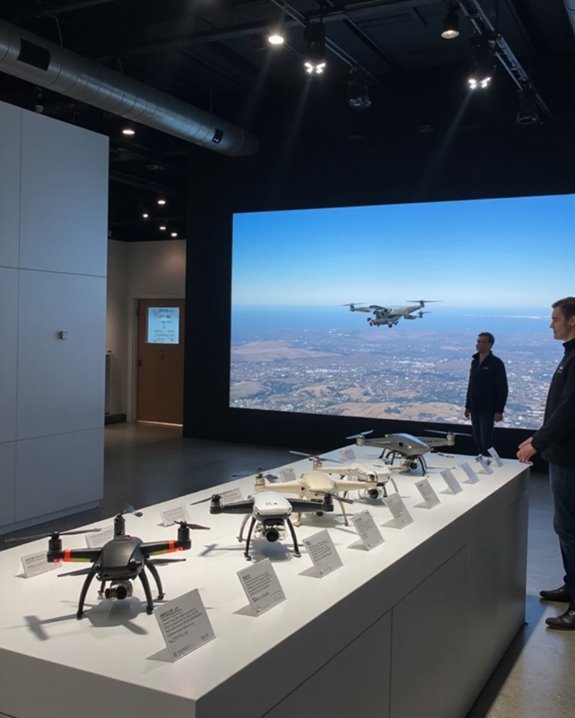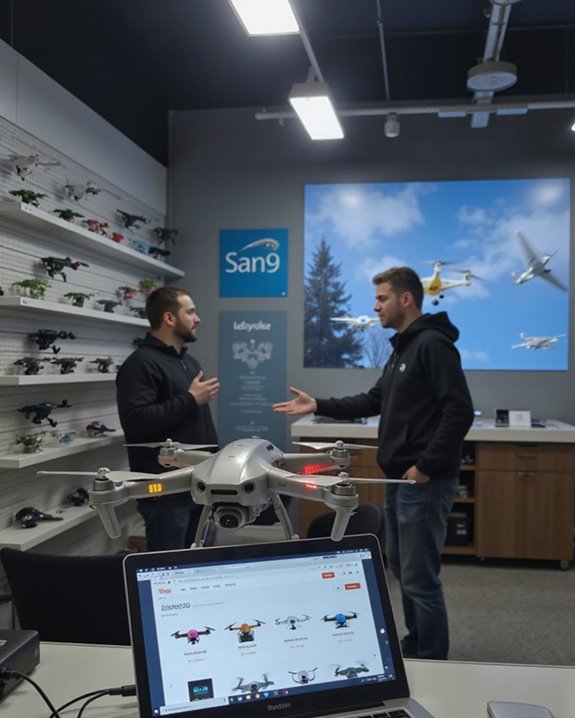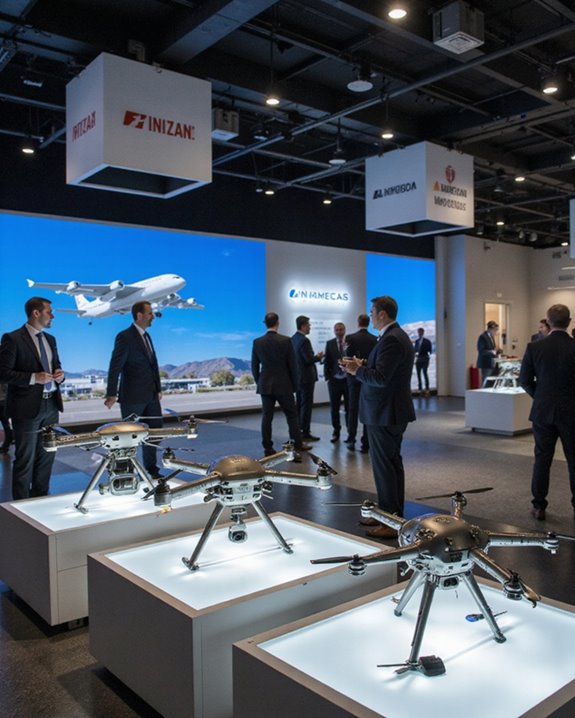Drones come in a remarkable range of prices to fit every budget and need! Entry-level models start around $30-300 for beginners, while hobbyist drones with 4K cameras and 30+ minute flight times typically cost $500-2,000. Professional and commercial drones can soar to $10,000 or even $90,000 for specialized industrial equipment. Features like camera quality, flight time, and AI capabilities directly impact what you’ll pay. The perfect drone awaits at every price point!
Key Takeaways
- Beginner drones range from $30-$300, while hobbyist models cost $500-$2,000 and professional drones exceed $10,000.
- Commercial drones for business applications typically cost between $5,000-$90,000 depending on capabilities and industry use.
- Real estate drone photography packages generally run $300-$600, requiring equipment investments of $1,500-$5,000.
- Drone pricing is significantly influenced by camera quality, flight time, AI features, and payload capacity.
- Regional factors affect drone costs, with seasonal demand, currency values, and geographic location creating price variations worldwide.
Consumer Drone Price Tiers: From Toy to Professional
Every drone enthusiast today faces a dizzying array of options spread across multiple price tiers, each offering distinct capabilities and features. For those exploring Beginner Options, toy drones priced between $30-$300 provide a perfect entry point with models like the Ryze Tello offering simple controls and reasonable flight times—perfect for learning the basics without breaking the bank!
Hobbyist Choices expand greatly in the $500-$2,000 range, where enthusiasts can enjoy impressive 4K cameras stabilized by 3-axis gimbals and flight times exceeding 30 minutes. The popular DJI Mini 4 Pro weighs under 250g (making it travel-friendly) while including obstacle avoidance systems that would have been unimaginable in budget models just a few years ago. As budgets increase, so do capabilities, with mid-level and professional options reaching well beyond $10,000!
Many beginner drones feature one-key takeoff/landing and headless mode to simplify flight control and help new pilots build confidence quickly.
The Real Cost of Drone Real Estate Photography
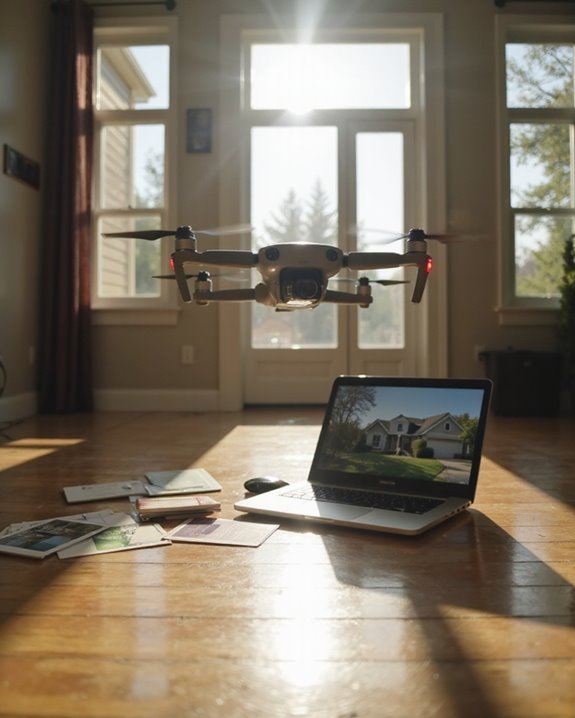
Why does drone real estate photography cost what it does? Professional drone photography packages typically range from $300 to $600 for standard shoots, but the price tag reflects numerous behind-the-scenes expenses. Photographers invest $1,500 to $5,000 in their flying cameras alone, not counting the specialized lenses and accessories that make your property shine!
Insurance premiums add another $700 to $1,500 annually, while editing services consume hours of post-production time. Those stunning blue skies and perfect lighting? That’s meticulous HDR processing and color correction at work. Weather conditions can also impact your wallet – expect a 25-50% weekend surcharge or even double fees for same-day bookings. The good news? Most photographers offer tiered packages based on your property size, making it easier to find options that match your budget!
Investing in drones with long flight times and high-resolution cameras helps maximize the value and quality of real estate photography.
Commercial and Industrial Drone Investment Analysis
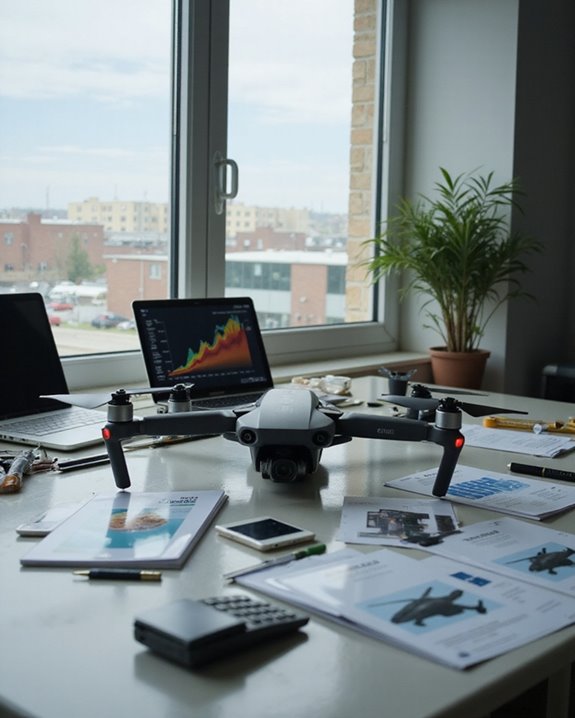
The commercial drone market has transformed from a niche technology into a multi-billion-dollar industry, with specialized drones commanding prices that reflect their powerful capabilities. Companies considering drone technology must develop thorough Investment Strategies that account for both acquisition costs ($5,000-$90,000) and ongoing operational expenses.
Risk Assessment becomes critical when evaluating these substantial investments! Agricultural drones ($3,000-$15,000) offer impressive ROI through enhanced crop monitoring, while inspection drones (starting at $10,000) deliver value by eliminating dangerous manual tasks. The recent 170% tariff on Chinese drones has dramatically altered the financial equation for many businesses, with popular models like the DJI Mavic 3 Pro potentially jumping from $2,199 to $4,750. Despite these challenges, commercial drones continue delivering substantial returns across industries like construction, security, and film production. Advanced features such as omnidirectional obstacle sensing are increasingly crucial for ensuring safety in complex commercial operations.
Key Features That Drive Drone Pricing Upward
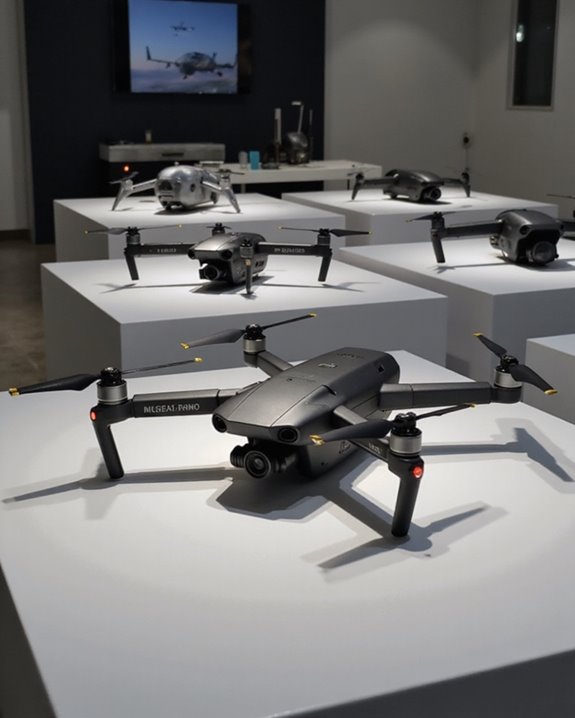
Understanding the factors that push drone prices into premium territory helps buyers make informed investments beyond the basic acquisition costs. Camera Features substantially impact pricing, with 4K and 8K capabilities commanding premium prices over basic 720p options. Professional-grade gimbals and specialized thermal or LIDAR imaging can quickly double a drone’s cost!
AI Autonomy represents another major price driver, with sophisticated object tracking and autonomous flight capabilities justifying higher price tags. Payload capacity affects cost directly, especially for industrial models designed to carry heavy equipment. Flight time and range—often determined by battery technology—can dramatically increase prices, with extended operation capabilities costing substantially more. Finally, the size and materials used in construction, particularly in larger commercial drones, can push prices well into the tens of thousands.
Regional Price Variations and Market Trends in Drone Technology
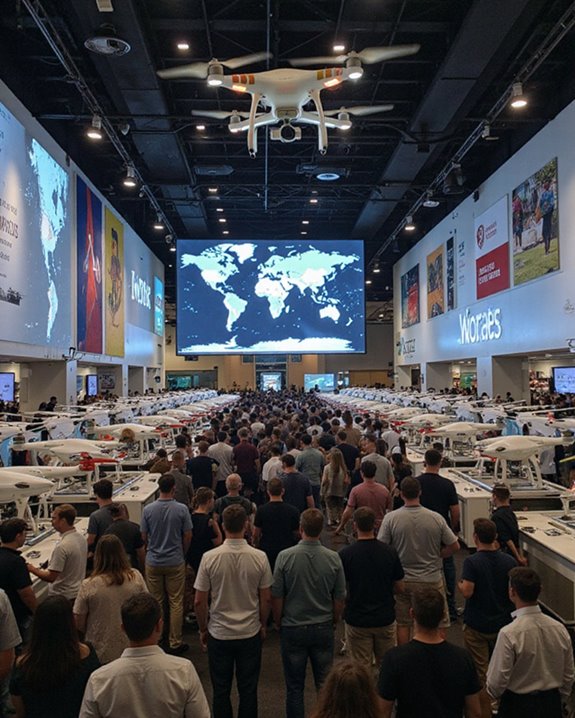
Across global markets, drone prices fluctuate dramatically based on local economic factors, creating significant purchasing disparities for identical models! While North American consumers might pay $500-3,000 for beginner models, the same drones often cost less in China where they’re manufactured. Seasonal Demand plays a key role too, with prices typically spiking during summer months and holiday periods when outdoor flying conditions improve.
Don’t forget about Currency Impacts, which can either work in your favor or against your wallet! A strengthening dollar might make imported drones cheaper for Americans, while simultaneously increasing costs for drone enthusiasts in countries with weaker currencies. Urban areas typically command premium pricing for drone services compared to rural regions, where operational restrictions are fewer and competition less intense. Who knew geography could affect your drone budget so dramatically?
Frequently Asked Questions
How Long Does a Drone Battery Typically Last?
Time flies when batteries are draining. Drone battery lifespan typically ranges from 5-30 minutes per charge, with higher-end models reaching 45-60 minutes. Professional drones with enhanced energy efficiency can last up to 2 hours.
Do I Need a License to Fly Drones Recreationally?
No pilot license is required for recreational drone flight. However, operators must pass the FAA’s TRUST test, maintain proper registration for drones over 250g, and carry proof of these recreational permits while flying.
What’s the Learning Curve for Flying a Drone?
Ironically, drone flying presents a universal learning curve for all beginners. Mastering beginner techniques like hovering and basic navigation precedes more complex maneuvers. With regular practice, skill progression accelerates, regardless of one’s initial aptitude.
Are Drone Repair Costs Comparable to Purchase Price?
Drone repair costs often approach the original purchase price for higher-end models. For expensive units, repairs are economically justified, while budget drones may warrant purchase alternatives when repair costs exceed 50% of replacement value.
How Does Weather Affect Drone Performance and Lifespan?
Like wolves to vulnerable prey, storm impact and harsh weather severely degrade drone performance. Extreme temperatures reduce battery life, while wind destabilizes flight. Humidity effects cause condensation on components, accelerating wear and shortening operational lifespan.

